Why you can trust Tom's Hardware
Grayscale & Gamma Tracking
We describe our grayscale and gamma tests in detail here.
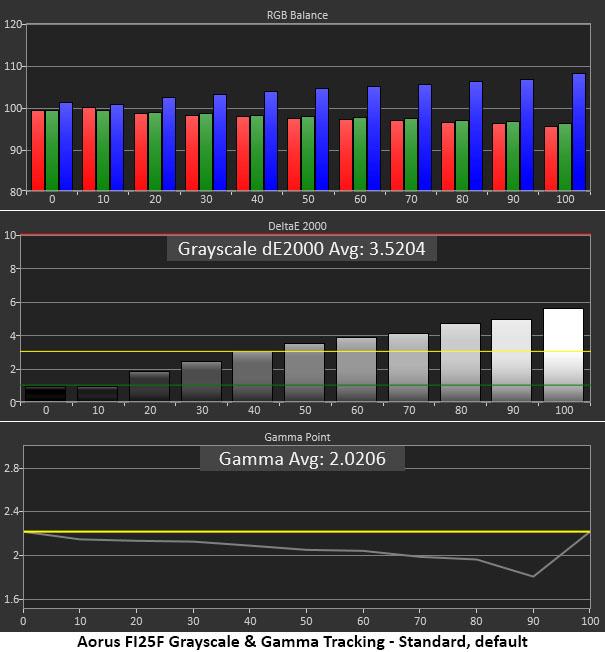

The FI25F’s default Standard picture mode is just on the edge of being good enough to use without adjustment. Most will be satisfied with the monitor in its out-of-box state. Our test shows mid and bright levels to be a bit blue. This is a reasonable error because it’s harder to see than a green tint and is minor. The highest error level is 5.6 Delta E (dE), not too bad. Gamma is a bit light, which means the midrange and bright areas will be a little washed out, and color will be less saturated.
Our calibration (second chart) included changing gamma from 3 to 4, which fixed the luminance issue neatly. A few changes to the RGB sliders brought grayscale tracking to an error-free state. This is excellent performance, but it would be even better if gamma tracking were perfectly straight. There is a little rise in the 10-50% range, meaning levels are a bit dark. In actual content, this wasn’t too noticeable. The overall picture quality is still far better than before calibration, thanks to improved color saturation.
Comparisons
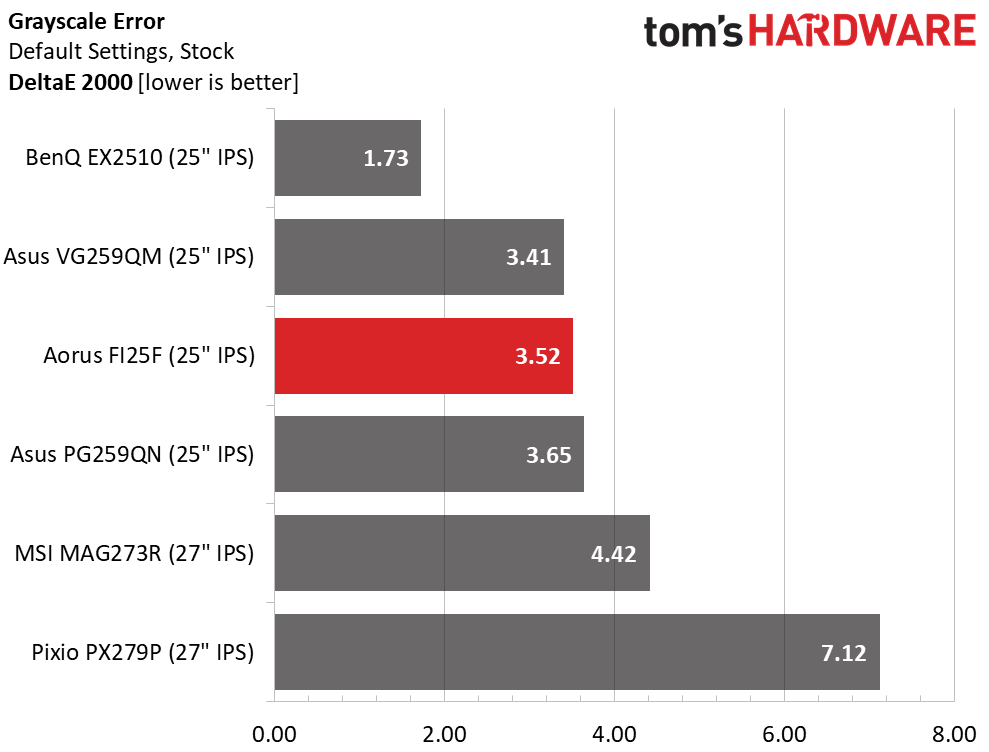
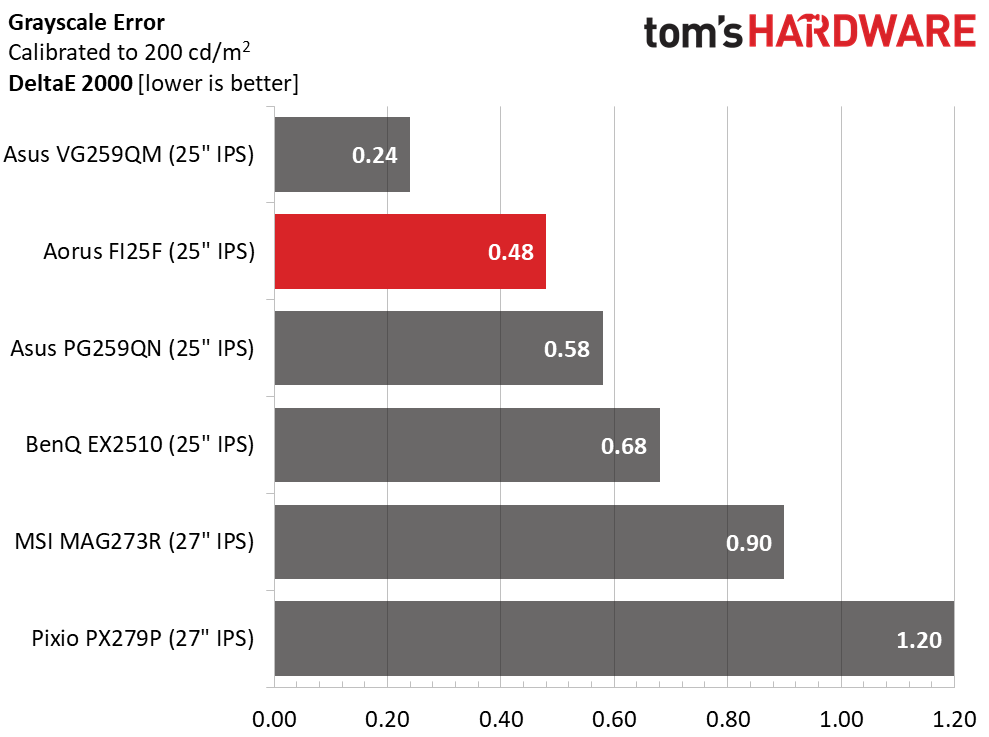
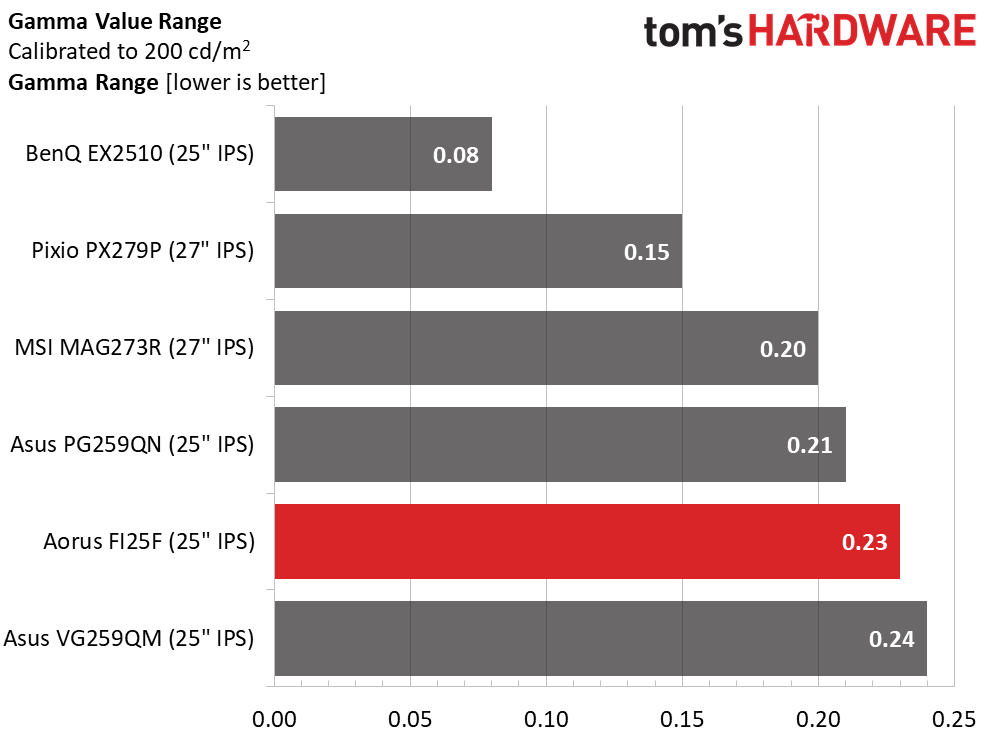
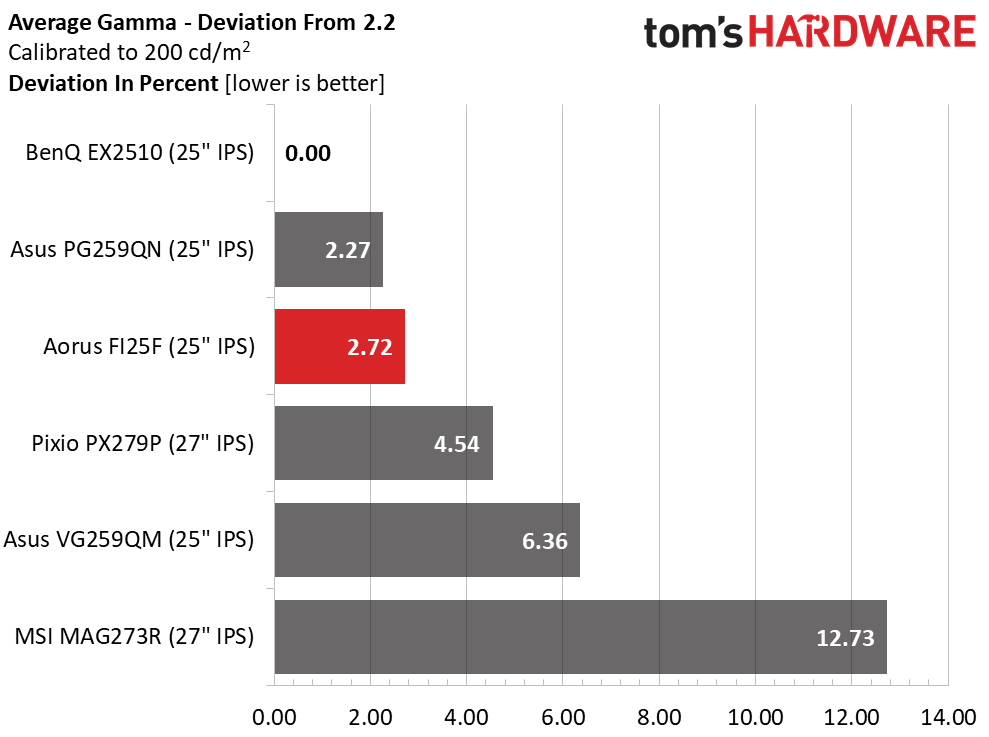
3.52dE is a reasonable default average grayscale error. Since the issue is a blue tint, most won’t have a problem. But our calibration (second chart) took accuracy to a high level. 0.48dE is about as good as it gets. Only the Asus can boast better numbers. And at this point, there are no visible differences between any of the monitors. All can get well below the visible threshold of 3dE for grayscale.
Though the average gamma comes within 2.72% of the 2.2 spec, there is a little more value variation than the others. 0.23 is not a huge value range, but the BenQ and Pixio are exceptionally tight in their tracking. In the FI25F’s case, if you have trouble seeing shadow detail (we didn’t), you can turn up the Black Stabilizer slider.
Color Gamut Accuracy
For details on our color gamut testing and volume calculations, click here.
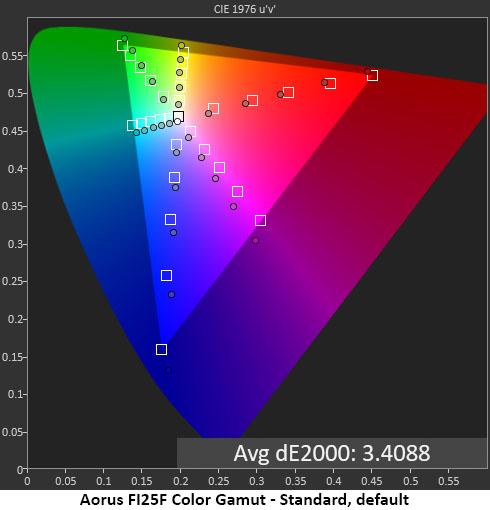
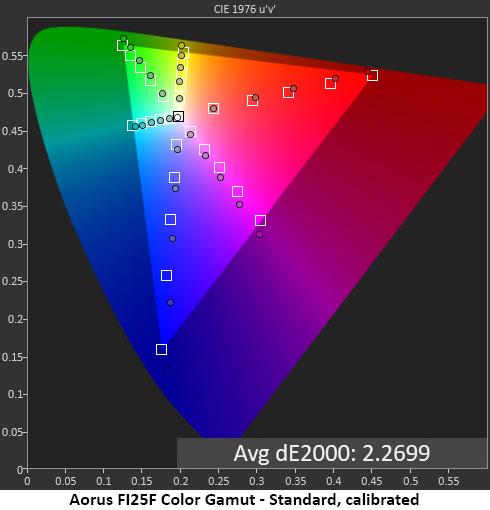
Out of the box, the FI25F has a few minor color issues. Its overall error of 3.41dE is good, but we can see a little under-saturation in the red primary and hue errors in cyan and magenta.
Get Tom's Hardware's best news and in-depth reviews, straight to your inbox.
We easily solved these issues with our grayscale calibration and change in gamma preset. With those adjustments in place, color was slightly over-saturated across the board, which looked good when gaming, and hue errors were nearly eliminated. The average color dropped to just 2.27dE, which is below the visible point. Our only wish is for an extended gamut option. HDR monitors should be able to cover at least 85% or more of DCI-P3.
Comparisons


With a 2.27dE average color error after calibration, the FI25F gives us no cause for complaint. It runs mid-pack in this group, but none of the screens here have significant problems. Note that the MSI’s 3.35dE number is based on the DCI-P3 gamut, which is its native color space. All others are compared to the sRGB spec.
The gamut volume test shows the difference. MSI manages to cover nearly 90% of DCI-P3 but overshoots sRGB by more than 32%. The others, including the FI25F, have a bit of bonus blue, which explains their 10% extra sRGB volume. None of the screens will look under-saturated; all deliver a colorful and accurate image. For color-critical work, you’ll need a software profile with all the displays.

Christian Eberle is a Contributing Editor for Tom's Hardware US. He's a veteran reviewer of A/V equipment, specializing in monitors. Christian began his obsession with tech when he built his first PC in 1991, a 286 running DOS 3.0 at a blazing 12MHz. In 2006, he undertook training from the Imaging Science Foundation in video calibration and testing and thus started a passion for precise imaging that persists to this day. He is also a professional musician with a degree from the New England Conservatory as a classical bassoonist which he used to good effect as a performer with the West Point Army Band from 1987 to 2013. He enjoys watching movies and listening to high-end audio in his custom-built home theater and can be seen riding trails near his home on a race-ready ICE VTX recumbent trike. Christian enjoys the endless summer in Florida where he lives with his wife and Chihuahua and plays with orchestras around the state.
-
RagedAPE Hello, I purchased thisReply
AROUS 25" FI25F-EK Is it the same monitor as the review? I do not know what the EK is.
Kind regards.
Ape